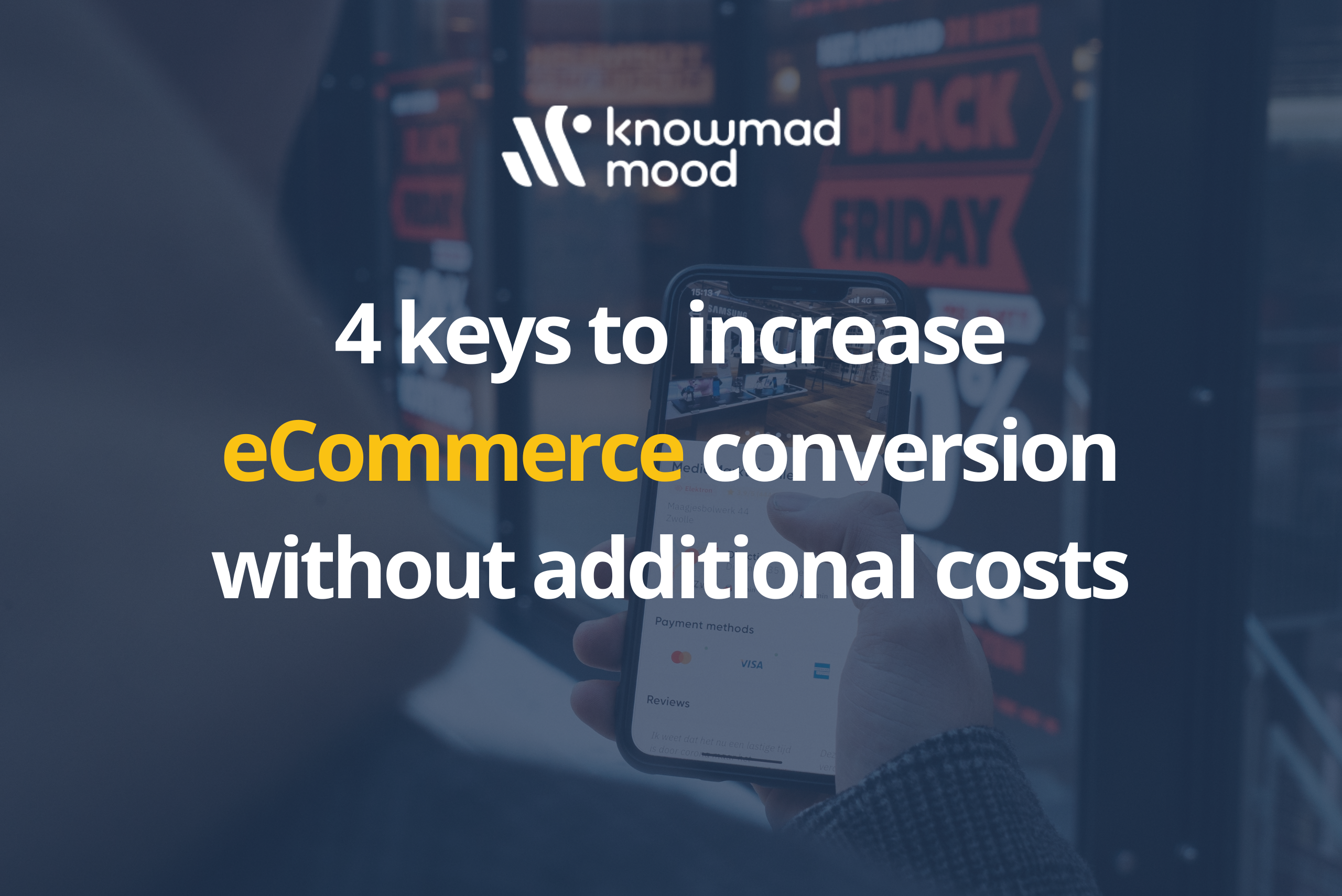
4 keys to increase eCommerce conversion without additional costs
According to Doodfinder, 80% of online stores close within 3 years of having started, and there is a 70% cart abandonment rate, according to the latest D/A Retail Ecommerce Report, also confirmed by Blueknow. These are some of the figures that demonstrate the need to generate new eCommerce strategies to optimize the sales funnel and, more specifically, the conversion rate.
This is happening at a time when privacy and data protection regulations for Internet users have made companies aware of the need to gradually stop relying on third-party data for their business. This is why knowmad mood, a technology consulting firm specializing in digital transformation services, suggests some strategies on how to increase the conversion of digital businesses while avoiding incurring additional costs:
Personalization of communication as a key to user loyalty
To retain users of online stores it is essential to have a good strategy to optimize the conversion rate. One of the most important thing is personalization of communication, oriented to the creation of user-specific messages that are adapted to the needs and desires of the audience. Once established, interest in the brand increases and so do the chances of converting even anonymous users into loyal customers. To achieve all this, it is necessary to know the audience well, since in this way it is possible to better understand their needs and desires in order to convey to them the idea that the product or service being sold can fulfill them. It is also essential to be able to collect on our own the so-called “first party data”, or “Zero Party Data” and “First Party Data”.
Addressing user abandonment and shopping cart recovery
In line with the above, one of the most important points to increase the conversion rate is addressing user abandonment. A good CRO (Conversion Rate Optimization) strategy contains measures to distinguish those moments of abandonment and leakage points within the eCommerce, as well as to address them. One of the keys will be to establish strategies to keep the user’s cart full and, in the case of a user who has abandoned it, to be able to take it even to a device other than the original one. In fact, effective cart recovery translates into a 10% increase in sales, compared to 1% for generic reminders, according to Blueknow, especially if we include the omnichannel experience.
Engaging and retaining anonymous users
One of the types of users with the highest cart abandonment rates are anonymous users. For them, it is also necessary to implement a good strategy for detecting and tracking their behavior. From the moment they are detected, the key will be to create unique strategies to convert them into known users, through personalized experiences. This is particularly important for recovering shopping carts with ‘exit intent’ strategies that show the cart to users when they are about to close the page. This increases the capture rate by 5% and can also increase the conversion rate by up to 25%, as it is something unexpected for the user. Another of the most effective strategies are survey campaigns, which are very useful to ask users for their feedback and find out the reasons why they have not bought from the eCommerce. Knowing your own weaknesses is fundamental as a first step to correct them and increase sales.
Always keep in mind the basics: definition of objectives, simple CTAs and performance calculator
Before creating the strategy, it is essential to analyze what users need, analyzing the current situation. From here, you can define concrete objectives or realistic and effective KPIs. Likewise, you cannot forget to establish CTAs (Call To Action) that are easy to understand, action-oriented and, of course, adapted to the cell phone, since, in fact, more than 85% of web traffic comes from mobile devices, according to Semrush data. Some examples are multi-step pop-ups that guide the user towards conversion, whose key is to place it at the right time avoiding intrusion; promotions on the home page for new users; or the ‘remaining calculation’, the reminder of what is left to reach the free shipping costs. Another thing to take into account are the A/B Tests that allow to know the variants that have obtained the best performance and that can be implemented in a definitive way in the eCommerce.
“Creating an eCommerce or online store today is not as difficult as it might seem in the past, the most complicated thing is to get loyal customers, scale the business and make it grow. Many believe that to achieve this it is necessary to incur more expenses, but nothing could be further from the truth, the essential thing is to adopt a ‘Lean’ and ‘Agile’ mentality to establish fast conversion and growth strategies, which are the key to business continuity. As we have seen, today you cannot rely on third-party data when 80% of users are unknown, so these strategies are undoubtedly key and effective to reduce the time to market and thus eCommerce have the success they deserve. And, of course, always relying on professionals who work taking into account the characteristics and specific needs of each business, as we do in knowmad mood” says Eduardo Cano, manager of the Customer area of knowmad mood.

